Coal
Show Me the Money: Putting a Dollar Value on Climate Change
 How do you monetize a human life? How about when that life is impaired with an illness? What's it worth to you not having to rush your child to the emergency room when they're turning blue during an asthma attack? What about to prevent a heart attack?
How do you monetize a human life? How about when that life is impaired with an illness? What's it worth to you not having to rush your child to the emergency room when they're turning blue during an asthma attack? What about to prevent a heart attack?
These days we live in a cost-benefit world that demands this kind of accounting for things that should be accepted at face value. Want to talk about the advantages of cleaner air? You have to be able to put a price tag on it. And, with a small slight of hand, that's what the Obama administration did when it touted all the economic reasons why its new carbon capture rule for existing power plants was a plus for the country.
Carbon pollution itself doesn't directly cause the kind of death and suffering among humans that the Clean Air Act was written to address. Oh sure, it might doom countless species, raise sea levels, and cause global catastrophe, but there's not a way to tie it directly to more mundane respiratory diseases or early mortality that we (well, everyone but the Texas Commission on Environmental Quality) associate with "air pollution."
Instead of pricing catastrophic planetary effects, no matter how self-evident their true costs might be, the EPA instead sought out to tag the out of pocket expenses saved by Americans in cutting pollution associated with carbon, like Particulate Matter and smog. Most of the $55 to $93 billion in economic gains cited by the EPA last week came from these co-benefits, rather than from added spending and jobs in renewable energy or preventing massive crop failures. Otherwise, the new rules might not have been "worth it" from a regulatory point of view. The administration projects the new rules will cause the loss of between 79,900 and 80,400 full-time equivalent jobs in power generation versus 111,800 full-time equivalent jobs in renewable or energy efficiency work, basically a wash.
Want to know the price of an asthma attack? $58. Multiply that by 140,000 to 150,000 across the country and you have the approximately $9 million saved over the next 15 years by reducing soot and smog – a side effect of reducing carbon pollution under the rules.
Non-fatal heart attacks cost an average of $98,000 in health care costs and lost earning power among under-25-year-olds versus an average of $200,000 among 55- to 64-year-olds, because this later demographic is supposedly reaching its peak earning power. Preventing a six-day bronchitis episode is valued at $430.
By far the largest single health impact from the carbon rules seems to come from the forecasted reduction in deaths associated with PM pollution, quickly becoming the most insidious and widespread air pollution threat in the world, and smog. EPA economists estimated savings of between $27.3 billion and $66.7 billion from lower levels of PM 2.5 (fine particles smaller than 2.5 microns in size) and Nitrogen Oxide by preventing 2,700 and 6,600 early deaths.
Most of these numbers come from anticipated cleaner or closed coal plants. It's not unusual for EPA to do accounting this way for the rules it's proposing, although it's the first time it's used it to justify carbon pollution regs.
Will these kinds of arguments win over the skeptics? Doubtful, but that's not who they're aimed at. Instead the administration is using these numbers as talking points to the media and the public in hopes of creating momentum the skeptics can't reverse or rationalize. After all, it's hard for even Rick Perry to call out your child's asthma attacks as unimportant or inconsequential.
Another Chapter of “Why Don’t We See This in Midlothian?”
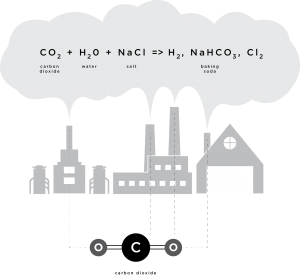 Cement plants are among the world's largest sources of CO2. In order to reduce their carbon footprints, either voluntarily or to comply with new environmental regulations, as well as make a buck, owners are trying out different strategies to turn their Greenhouse Gases into just plain green cash.
Cement plants are among the world's largest sources of CO2. In order to reduce their carbon footprints, either voluntarily or to comply with new environmental regulations, as well as make a buck, owners are trying out different strategies to turn their Greenhouse Gases into just plain green cash.
As far as we can tell, the "SkyMine" pilot-project announced for San Antonio's Capital Aggregates Cement Plant is still on schedule for operation later this year. Employing 50 people, the first-of-its-kind facility will convert the cement plant's carbon dioxide into baking soda and hydrochloric acid that's aimed at oil and gas field use.
Now comes word that a LaFarge Cement Plant in Canada is hooking up with a fuel cell company to make a slightly more progressive product from its GHGs:
"Mantra Energy Alternatives has struck a deal with Lafarge Canada to deploy an electrochemical reduction technology at Lafarge’s No. 9 Road cement plant.
“This will be the first pilot plant of its kind in the world,” said Mantra’s vice-president Patrick Dodd in a press release.
On paper, the technology would convert carbon dioxide, considered the most prolific greenhouse gas, into useful chemicals like formic acid and formate salts. The pilot plant would convert 100 kilograms per day of carbon dioxide emitted from the local cement plant into concentrated formate salts, which sell for about $1,500 per tonne.
Mantra is eying the formic acid for use in its patented fuel cells, which it bills as a significantly less expensive fuel cell with greater power density."
Granted, the manufacturing of oil and gas chemicals sounds more likely for one of the three huge Midlothian cement plants to attempt than diving into the alternative energy business, but at least it's something. The end products can change and adapt but these projects begin to put the infrastructure of a supply and demand system in place while seeing potentially large decreases in CO2 output. In 2014 America, the fastest way to get reductions in GHGs is to make it profitable to do so. These experiments pave the way for that to happen.
There's no question that the TX/ Martin-Marietta, Holcim and Ash Grove cement plants are the largest stationary sources of CO2 in North Texas, or that together, they form a huge GHG hotspot. All the old coal-fired power plants that would have challenged them have been shuddered or converted to gas.
While (forced) modernization at all three plants like the conversion from wet to dry kiln technology has brought all emission totals down, particularly CO2, the fact remains that the huge scale of operations in Midlothian means there's no other facilities that churn it out as much. And yet not one creative idea for how to reduce those huge local emissions has been announced from any of those companies. You can't just use the Texas excuse because the San Antonio experiment is happening despite no immediate government mandate, especially on existing facilities. And you might think that the first company to do so would receive some needed good PR. But nope.
This has been another chapter of "Why Don't We See This in Midlothian?"
Between Now and Friday: Tell Them What They Can Do With Their Smog
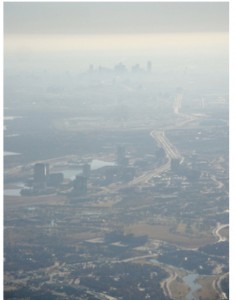 Frustrated that Rick Perry's Texas Commission on Environmental Quality isn't doing enough to end DFW's chronic smog problem, the local "Council Of Governments" has issued a "Request for Information" asking for the public's help in suggesting ways to reduce ozone pollution in North Texas.
Frustrated that Rick Perry's Texas Commission on Environmental Quality isn't doing enough to end DFW's chronic smog problem, the local "Council Of Governments" has issued a "Request for Information" asking for the public's help in suggesting ways to reduce ozone pollution in North Texas.
Please use our Click N' Send E-mail form to make sure they get the message that the public wants:
1) State-of-the-Art pollution controls on huge "point sources" of pollution like the Midlothian cement kilns and East Texas power plants.
2) New pollution control equipment and strategies to reduce the air pollution from the thousands of natural gas facilities mining the Barnett Shale.
3) Inclusion of all trucks and off-road vehicles in the state's vehicle maintenance and inspection program.
You can also add strategies or ideas of your own as well. Just click here, fill out the e-mail and send it in to be counted.
It takes as little as 30 seconds.
BUT YOU ONLY HAVE UNTIL 5 pm FRIDAY, VALENTINE'S DAY.
______________________________________________________________
Rick Perry's TCEQ is so discredited on the matter of DFW smog, local officials usually working in concert with the state agency are now looking elsewhere for help.
Ever since DFW was required to write and submit new clean air plans, The North Central Texas Council of Governments has been the local vehicle used by the state to funnel information, concern, and ideas back and forth.
It was never easy to get Austin's attention or convince the Powers That Be of the need to take bigger clean air measures. It took a decade for Downwinders to get the State to admit that the Midlothian cement plants had a huge impact on local air quality before they were the targets of new controls.
But ever since Rick Perry began running for President in 2010, it's been impossible for Austin toget serious about any DFW clean air plan. For the past four years, TCEQ has claimed that it can reduce air pollution enough by doing nothing.
That strategy has been a dismal failure. New car buying in the middle of the worst economic downturn since the 1930's was the TCEQ clean air plan in 2011. Austin promised that if we just sat back, we'd have the lowest smog levels ever recorded. Instead we had worse air pollution levels than we did five years ago.
This time round, TCEQ is saying a new EPA-mandated low-sulfur gasoline mix in 2017 will be the region's savior for the new clean air plan that's supposed to be successful in reaching the new federal ozone standard of 75 parts per billion in 2018. We're at 87 ppm now – still in violation of the old 1997 standard.
Just watch this new fuel being added to cars and see the ozone numbers drop, TCEQ is saying. No need to put controls on gas facilities, or cement kilns, or power plants. Nothing that would give Rick Perry's opponents on the Right any opportunity to claim he was "anti-bidness."
Even the Council of Governments isn't buying it.
That's why, in their own bureaucratic fashion, this Request for Information that the COG has issued is it's own middle-of-the-road middle finger to TCEQ.
Usually, it would be the state facilitating a discussion of new air pollution control strategies, but since it's obviously not interested, the COG has decided to go its own way. That's how bad things have gotten in Austin – even their most reliable allies in DFW can no longer take them seriously.
It's not clear what will happen to the list of control measures that the Council of Governments is assembling. Some might receive some more official attention, but locals have no authority to write or override Austin's decisions. TCEQ is the only entity that's authorized to submit a new clean air plan to EPA by the June 2015 deadline.
But there are ways to use the useless clean air plans that Austin is submitting. Downwinders' own green cement campaign is a great example.
In 2007, we successfully inserted a voluntary air pollution control strategy into the TCEQ plan revolving around the purchasing of cement from newer cleaner "dry" kilns by local North Texas governments. We then took that "green cement" procurement option and went to Dallas to pass the nation's first green cement ordinance. Then Fort Worth passed it. Then Plano. Then Arlington. Then Denton. Then Dallas County. Then Tarrant County.
Within two years, we had established a de facto moratorium on dirtier "wet kiln" cement within at least a dozen municipal and counties. Combined with federal rule changes, we were able to get all Midlothian wet kilns closed. The last one is being be converted to a dry kiln this year. All while Rick Perry was governor.
The same thing could happen with a good "off-sets" policy for gas facilities if a local city of county could pass a template ordinance showing the way. Currently, most of the gas industry is exempt from being required to "off-set" their air pollution in smoggy "non-attainment" areas like other large industries in DFW. Take away this exemption and you'll see a swift decrease in gas industry air pollution.
It's these kinds of strategies that don't depend on action from Austin that offer the greatest potential for progress this time around.
TCEQ has never written a successful clean air plan for North Texas, and it's not going to start now. But citizens themselves can take their lungs' fate into their own hands and begin to build a system of local measures that can make breathing easier.
______________________________________________________________
CALENDAR AND STATUS REPORT OF DFW'S NEWEST CLEAN AIR PLAN
Reach a 3-year rolling average of no more than 75 ppm of ozone at all 18 DFW area air monitors.
Better Living Avoiding This Chemistry: An Industrial Toxic Primer
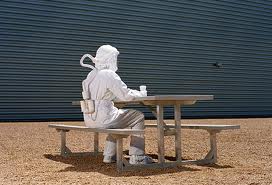 Even though this EcoNews article is about air poisons that result from fossil fuel production, it applies to just about any combustion source, including cement plants, manufacturing plants, vehicles, and so on. It's a pretty good top ten list, although you wonder why Dioxins and Furans got left off, since they're toxic by the gram instead of pound. Also missing is Particulate Matter as a stand alone threat, although it gets a shout out as a by-product. Nevertheless, these are the among the most dangerous pollutants that have caused and are still causing a lot of problems in North Texas and elsewhere:
Even though this EcoNews article is about air poisons that result from fossil fuel production, it applies to just about any combustion source, including cement plants, manufacturing plants, vehicles, and so on. It's a pretty good top ten list, although you wonder why Dioxins and Furans got left off, since they're toxic by the gram instead of pound. Also missing is Particulate Matter as a stand alone threat, although it gets a shout out as a by-product. Nevertheless, these are the among the most dangerous pollutants that have caused and are still causing a lot of problems in North Texas and elsewhere:
1. Benzene
Benzene is a well-established carcinogen with specific links to leukemia as well as breast and urinary tract cancers. Exposure to benzene reduces red and white blood cell production in bone marrow; decreases auto-immune cell function (T-cell and B-cells); and has been linked to sperm-head abnormalities and generalized chromosome aberrations.
Benzene is one of the largest-volume petrochemical solvents used in the fossil fuel industry. It is a major component in all major fossil fuel production: oil, coal and gas. People are exposed to it from inhaling automobile exhaust and gasoline fumes, industrial burning such as oil and coal combustion, and exposure to fracking fluids.
There's a recent Emory University study concluding that risk for leukemia fell with every mile between a person's home and facilities that release benzene.
2. & 3. Sulfur Dioxide (SO2) and Nitrogen Oxides (NOx)
Sulfur dioxide (SO2) and nitrogen oxides (NOx) are two primary examples of particle-forming air pollutants (particulate matter). Particulate matter is known to contribute to serious health problems, including lung cancer and other cardiopulmonary mortality. SO2 and NOx are both highly toxic to human health, and contribute directly to thousands of hospitalizations, heart attacks and deaths annually.
SO2 is particularly dangerous for children. Studies correlate SO2 emissions from petroleum refineries—even in lower exposure levels over time —to higher rates of childhood asthma in children who live or attend school in proximity to those refineries. Similarly, small particles of NOx can penetrate deeply into sensitive lung tissue and damage it, causing premature death in extreme cases. Inhalation of such particles is associated with emphysema and bronchitis.
4. Petroleum Coke (Pet Coke)
Pet coke is a by-product of oil processing that's also used as a fuel. It's a heavy dust which resembles coal. It's burned in power plants and cement plants. It contains dozens of dangerous chemicals and heavy metals, including chromium, vanadium, sulfur and selenium. It's a huge contributor to particulate mater and NOx and SOx formation
5. Formaldehyde
Formaldehyde is a carcinogen with known links to leukemia and rare nasopharyngeall cancers, according to the International Agency for Research on Cancer. Formaldehyde is highly toxic regardless of method of intake. It is a potent allergen and genotoxin. Studies have linked spontaneous abortions, congenital malformations, low birth weights, infertility and endometriosis to formaldehyde exposure. Epidemiological studies link exposure to formaldehyde to DNA alteration. It is also contributes to ground-level ozone.
Independent studies, have detected dangerous levels of formaldehyde in both wastewater and ambient air emissions from fracking operations. One researcher, with the Houston Advanced Research Center, said reading from one test site in North Texas, “astoundingly high,” and, “I’ve never heard of ambient (formaldehyde) concentrations that high… except in Brazil.”
6. Polycyclic Aromatic Hydrocarbons (PAHs)
In actuality, this is not a single listing—polycyclic aromatic hydrocarbons (PAH) is an entire class of toxic chemicals, linked together by their unique chemical structure and reactive properties.
Many PAHs are known human carcinogens and genetic mutagens. In addition, there are particular prenatal health risks: prenatal exposure to PAHs is linked to childhood asthma, low birth weight, adverse birth outcomes including heart malformations and DNA damage.
Additionally, recent studies link exposure to childhood behavior disorders; researchers from Columbia University, in a 2012 Columbia University study, found a strong link between prenatal PAH exposure and early childhood depression. Infants found to have elevated PAH levels in their umbilical cord blood were 46% more likely to eventually score highly on the anxiety/depression scale than those with low PAH levels in cord blood. The study was published in the journal Environmental Health Perspectives.
7. Mercury
Mercury is a dangerous neurotoxin emitted from coal-fired power plants and any other combustion source using coal for fuel – like the Midlothian cement plants. It damages the brain and the nervous system either through inhalation, ingestion or contact with the skin. It is particularly dangerous to pregnant women and children. It is known to disrupt the development of the in-vitro brain. In low doses, mercury may affect a child’s development, delaying walking and talking, shortening attention span, and causing learning disabilities. High dose prenatal and infant exposures to mercury can cause mental retardation, cerebral palsy, deafness and blindness. In adults, mercury poisoning can adversely affect fertility and blood pressure regulation and can cause memory loss, tremors, vision loss and numbness of the fingers and toes.
One out of every six women of childbearing age in the U.S. have blood mercury levels that could be harmful to a fetus, according to EPA reports. The EPA estimates that 300,000 children are born each year at risk for significant development disorders due to mercury exposure.
8. Silica (Silicon Dust/Sand)
Crystalline silica (“frac sand”) is a known human carcinogen; breathing silica dust can lead to silicosis, a form of lung disease with no cure. This is a hazard in the cement industry and threat to those living downwind of cement plants, and now it appears to be one for natural gas roughnecks and adjacent homeowners as well.
Silica is commonly used, in huge amounts, during fracking operations. Each stage of the process requires hundreds of thousands of pounds of silica quartz–containing sand. Millions of pounds may be used for a single well.
The presence of silica in fracking operations, simply put, is a major safety risk with a high likelihood of dangerous exposure. Case in point: researchers from the National Institutes of Occupational Safety and Health (NIOSH) recently collected air samples at 11 fracking sites in five different “fracking states” (CO, ND, PA, TX and AR) to evaluate worker exposure to silica. Every single site had measures higher than the NIOSH threshold for safe exposure—so high, in fact, that about one-third of the samples collected were even above the safe threshold for wearing a safety respirator mask. This was reported in May 2013 in the Journal of Occupational and Environmental Hygiene.
9. Radon
Radon is a colorless, odorless, tasteless radioactive gas which causes lung cancer. It is the second largest cause of lung cancer in the U.S. after cigarette smoking. About 20,000 people per year die from lung cancer attributed to radon exposure according to the National Cancer Institute. Further, there is no known threshold below which radon exposures carries no risk.
Radon exposure can come from a variety of natural sources. However, fracking (natural gas) represents a significant new and increased source of radon exposure to millions of citizens. Radon is released into local groundwater and air during fracking operations. It also travels through pipelines to the point of use—be it a power plant or a home kitchen.
The science behind radon release and exposure is complex but explained well here by Christopher Busby, the Scientific Secretary of the European Committee on Radiation Risk, who warns that radon dangers from fracking “have not been addressed properly (or at all) by the environmental impact statements published by the operators, or by the Environmental Protection Agency in the USA.”
10. Hydrofluoric Acid (HF) / Hydrogen Fluoride
Hydrofluoric acid (HF) is “one of the most dangerous acids known.” HF can immediately damage lungs, leading to chronic lung disease; contact on skin penetrates to deep tissue, including bone, where it alters cellular structure. HF can be fatal if inhaled, swallowed, or absorbed through skin.
The senior laboratory safety coordinator at the University of Tennessee said, “Hydrofluoric Acid is an acid like no other. It is so potent that contact with it may not even be noticed until long after serious damage has been done.”
Hydrofluoric Acid is a common ingredient used in oil and gas extraction.
Numerous studies, including recent ones conducted by both The Center for Public Integrity (CPI) and the United Steelworkers Union (USU) cite the oil industry’s abysmal safety record as a high risk factor for a major HF accident; over the past decade, more than 7,600 accidental chemical releases from refineries have been reported by the industry. In the past three years alone, a total of 131 “minor” accidents involved HF.
Can You Hear Me Now? EPA’s National “Listening Session” on New Coal Carbon Pollution Rules This Thursday
 Many of you have already seen the increasingly urgent pleas from the usual suspects for people to show up at this Thursday's national EPA "Listening Session" on new emission standards for Greenhouse Gas pollution. Try to ignore the New Age-by-way-of-George-Orwell alternative name for a public hearing, and the industry-friendly "listening" schedule of 10 am to 3 pm, and concentrate on the fact this is one of only a handful of such sessions taking place nationwide, and it's in Texas, our Texas.
Many of you have already seen the increasingly urgent pleas from the usual suspects for people to show up at this Thursday's national EPA "Listening Session" on new emission standards for Greenhouse Gas pollution. Try to ignore the New Age-by-way-of-George-Orwell alternative name for a public hearing, and the industry-friendly "listening" schedule of 10 am to 3 pm, and concentrate on the fact this is one of only a handful of such sessions taking place nationwide, and it's in Texas, our Texas.
Like it or not, public health-minded residents of DFW have the burden of showing up to national hearings like this just to prove we exist. Nobody expects there to be an viable environmental movement in the Belly of the Beast, especially outside Austin. However hard we work to change that image, it's still a popular one and in this case, it hits entirely too close to home. Because Texas is the world capitol for carbon pollution. We're Numero Uno, A Number 1. We're living in the barrel of the gun that's pointed right at the planet's head.
EPA recently reported that Texas released more GHG pollution in 2012 than the next two states – Indiana and Pennsylvania – combined. We're responsible for a full 12.5 % of the entire US annual total, almost 400 million metric tons of the stuff, ever year. Just take a look at the difference between us and the other 49.
Then use this handy-dandy EPA map of incredibly large sources of GHG pollution in the US. It allows you to zoom down to what's in each county of each state. Look at all the sources around DFW. Most are also large sources of other kinds of pollution. We're living in a sea of pollution created by these facilities.
So when EPA decides to schedule its one and only listening session in Texas on new rules to reduce this kind of pollution from some of the biggest sources in our own backyard, we need to show up because we're a disproportionate part of the problem.
We also need to be there because industry will be there, in force. The old TXU really wants to keep its obsolete, lignite-burning East and Central Texas coal plants running without any of these modern pollution control contraptions. Doesn't matter if they're aimed at Particulate Matter, or smog-forming pollution or GHGs, they just don't want them. You can bet they'll be bringing in folks from those coal plants to say what a terrible economic cost it would impose on the host communities and the company, and how it'll put the entire statewide grid in peril.
Someone has to be there to balance that testimony by pointing out that the economic, public health, and environmental impacts of this pollution reach far beyond Limestone County, Texas or even the US, and need to be considered on the agency's balance sheet as well.
Every yahoo with Americans for Prosperity, or other industry astroturf groups will be there because these kinds of national forums to bash Obama's energy policies are what they live for – and it's the only thin they do halfway competently. Likewise for the industry-aligned Freedom Works branch of the Tea Party.
And does someone want to start an office pool on how many Republican primary candidates will be appearing, trying to outflank each other on their Right? Expect to see and hear a lot about "Obama's War Against Coal" on Thursday. It's Texas.
Which is why even if you're not a fan of this Administration, you have to recognize that the first attempt to regulate greenhouse gases from coal plants should be encouraged, in Texas. It's a foot in the door to do more effective things, to start talking about GHG regulations in a serious way. It establishes a precedent. And that is what industry fears the most. You don't have to like the EPA to understand that the enemy of your enemy is your friend in this fight. And did we mention it's in Texas?
Finally, we just emerged from an ozone season that was mild by recent standards – but still harsh enough to keep us in violation of the old 1997 smog standard. We know the East and Central Texas power plants contribute to DFW's air quality problems. These new carbon regulations EPA is considering for existing power plants have the potential to reduce a variety of air pollution, not just GHGs. We know Austin and TCEQ are going to be of no help in addressing these sources in the next DFW clean air plan. If reductions are going to happen, they're going to have to be driven by the EPA, local governments, or the marketplace. We can't let this opportunity for meaningful reductions and better air pass us by. If for no other reason, you need to show up on Thursday and say you support the EPA's regulation of these facilities because you've given up on Texas doing so.
For lots of reason, it's in your own self interest to attend this thing, even if you real passion is gas field pollution, or smog, or cement plants or whatever. A victory in this category of regulation is a victory for all of us involved in clean air issues. And it's Texas.
National EPA "listening session" on carbon limits for existing coal plants
THIS Thursday, November 7, 10:00 a.m. to 3:00 p.m.
1st Floor Auditorium, J. Erik Jonsson Dallas Central Library, 1515 Young Street, Dallas, TX (map)
2013 DFW Smog Report: Failure….Again
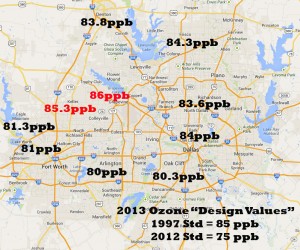 (Dallas)— On the eve of constructing yet another DFW clean air plan, the 2013 Ozone Season ended on Thursday the same way the previous 16 have ended: with North Texas out of compliance with the 1997 federal clean air standard.
(Dallas)— On the eve of constructing yet another DFW clean air plan, the 2013 Ozone Season ended on Thursday the same way the previous 16 have ended: with North Texas out of compliance with the 1997 federal clean air standard.
Even a mild summer with lower temperatures and more rain couldn't save the numbers from exceeding an illegal three-year running average of 85 parts per billion at monitors in Keller and Grapevine.
According to Jim Schermbeck with the clean air group Downwinders at Risk, what makes this year’s violation particularly troublesome is that the 1997 standard has been replaced with a more protective one that's 10 ppb lower. “For the next DFW air plan to succeed, it will have to reduce smog to levels that no DFW monitors have ever recorded. I don’t know anyone outside of Austin who thinks the state is up to that task.”
That new plan has its official kick-off event next Tuesday, November 5th, beginning at 9am in Arlington at the Council of Governments Headquarters. It's the first briefing from the Texas Commission on Environmental Quality on the computer model it will be using to base the plan on. Everything about one of these plans is based on such a computer model, a model only the state can run. The plan must be submitted to EPA by June of 2015.
Even though extremely high ozone numbers were rarer this year, there were enough bad air days to cause the running averages of 10 out of 17 monitors, called "design values" to rise – not the kind of trend you want when you're next task is complying with a tougher standard.
Schermbeck was particularly concerned about a monitor near Mockingbird and I-35 in Central Dallas that’s seen its ozone average rise dramatically for three years in a row. “This is a monitor that had a "design value" of 67 parts per billion in 2010 – that is, it was in compliance with the new 75 ppb standard just three years ago. But now it’s up to 84 ppb and almost out of compliance with the 1997 standard. That's quite an increase in three years, and in a place where smog hasn’t been a problem for awhile.”
Every monitor inside the DFW metro area and even most "rural" monitors had a design value above the new standard of 75 ppb. Only Kaufman and Greenville made it under the wire, barely, with readings of 74 ppb.
As usual, the worst ozone levels were found in the northwest quadrant of the DFW area. This is a well-known historical pattern caused by the predominant southeast to northwest winds that blow pollution from the coast up through the coal and gas patches of East and Central Texas, over the Midlothian Industrial Complex and North Texas central urban cores into Northwest Tarrant Wise and Denton counties
This pattern has been the target of the last three state clean air plans, but has never been overcome. Schermbeck noted that last clean air plan to make a dent was the 2006 effort that produced lower numbers in steady fashion. Since 2008 however, air quality that was supposed to be getting better has gotten worse, or stagnated.
While cars have gotten cleaner during this time, and pollution from cement and coal plants has been reduced, there's one "source category" of pollution that's increased significantly since 2008: the gas industry.
In submitting the last DFW air plan to EPA in 2011, the Texas Commission on Environmental Quality estimated there were more tons of smog-forming Volatile Organic Compounds being released by the gas industry in the official DFW "non-attainment area" than by all the cars and trucks on the road combined. That wasn't true in 2008.
Moreover, this is new air pollution in a smog non-attainment area that doesn't have to be off-set by reductions in pollution elsewhere in DFW. Unlike every other large industry, the gas industry is exempt from this offset requirement of the Clean Air Act.
Denton's Airport monitor's 4th highest reading of 85 ppb this summer, the one that officially counts toward its running average, was the highest such reading in the entire state, including Houston.
There's no doubt Denton is in the middle of the local gas patch, as are the Keller and Grapevine monitors that had the highest design values this year. Given the decreases in pollution from other categories, are gas patch emissions keeping these numbers from coming down they way they were supposed to? Austin keeps saying no, but the evidence is compelling.
Just last year there was a study out of Houston showing how a single flare or compressor station could significantly impact local ozone levels by as much as 5 or 10 ppbs. TCEQ itself just produced a study this last summer showing how Eagle Ford Shale gas pollution is increasing ozone levels in San Antonio.
Local Barnett Shale gas pollution might explain these Tarrant and Denton county monitors' problems, but they don't explain the rise in numbers of the Dallas monitors, since the wind during ozone season comes in from the south to southeast.
What new pollution is coming from that direction? Gas industry pollution from numerous compressor stations and processing plants stations in Freestone, Anderson, Limestone and other counties just about 90 to 100 miles south-southeast of Dallas. If one adds up all the emissions these facilities are allowed under their "standard permits." it exceeds the pollution from coal plants like Big Brown. That's a huge hit from sources that weren't there 10 years ago.
In effect, DFW is getting squeezed between gas pollution being produced in the middle of its urban areas, and gas pollution blowing in from the south.
“Officials with Rick Perry's TCEQ would rather drink lye than admit gas pollution is causing smog problems for DFW” says Schermbeck, “but such an admission might be the only way to bring DFW into compliance with the Clean Air Act.”
“This is why local DFW municipal and county governments serious about air quality must divorce themselves from Austin's politicized science and begin to seek their own solutions. Austin really isn't interested in solving DFWs chronic smog problems. Heck, the Commissioners who run TCEQ don't even believe smog IS a health problem.”
Poultry Expert to Doctors: You’re Wrong, Ozone Doesn’t Cause Asthma
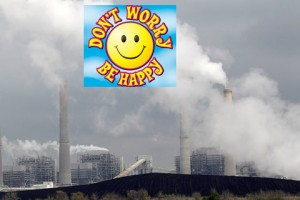 Feigning allegiance to some sort of science the scientists themselves don't use, the Texas Commission on Environmental Quality rejected a petition by the Dallas County Medical Society to put new pollution control equipment on three large coal power plants upwind of DFW, saying there's no real conclusive evidence that smog causes respiratory problems like asthma.
Feigning allegiance to some sort of science the scientists themselves don't use, the Texas Commission on Environmental Quality rejected a petition by the Dallas County Medical Society to put new pollution control equipment on three large coal power plants upwind of DFW, saying there's no real conclusive evidence that smog causes respiratory problems like asthma.
It may come as a surprise to newcomers, but the largest state environmental agency in the U.S. has never recognized a connection between ozone pollution, or smog, and respiratory problems. Austin has fought the implementation of every new ozone standard ever proposed by EPA and played down any causal link suggested by recent studies. If you want to know what's behind the current push in the US House of Representatives to discredit the historical "6-Cities Study" – the basis for the original connection between smog and public health, look no further than the Texas Commission on Environmental Quality, where such mainstream science has never been accepted. It's not in industry's interest, or the pro-industry-constantly-running-for-something Governor, whose fingerprints so besmirch the TCEQ these days, even new file clerk positions are considered ideological appointments.
TCEQ Chairman Bryan W. Shaw said studies suggest that cutting ozone alone might not prevent asthma attacks.
“I’m convinced that it doesn’t make sense to get ahead of the science,” Shaw said. He later added, “I don’t want there to be this knee-jerk reaction.”
Commissioner Toby Baker said asthma has “a wealth of confounding factors.” To assume that a correlation between high ozone and asthma hospitalizations means ozone causes asthma is “frankly irresponsible,” Baker said.
That would be Bryan Shaw, A&M Poultry Science major, and Toby Baker, A&M Public Administration major. Both of them have the same amount of expertise in medicine and public health, which is to say none. But that doesn't stop them from discounting the doctor's own experience with layers of condescension.
“We’re still seeing harm to our patients on high ozone days,” Dr. Robert Haley, a professor at UT-Southwestern Medical Center, told the commissioners. “The fact remains that the Dallas-Fort Worth area has among the worst ozone levels in the nation, Dr. Robert Haley, a professor at UT-Southwestern Medical Center, told the commissioners.“
But the Commissioners had an answer for that concern too: just wait for our next DFW clean air plan! In 2015! To address smog problems that don't worry us at all! That will be just as effective as the last one! Which ended with higher ozone levels than when it started! Which is why we definitely do not need to better control the air pollution from big, obsolete coal plants!
See how that little bit of misdirection works?
The only way DFW will ever see real clean air progress while Rick Perry's TCEQ is in charge is if local governments do it on their own. No amount of professional public health concern is enough to outweigh the total Rick Perryization of the agency. Not even when it comes from 7000 Dallas County doctors.
Meanwhile, good on Public Citizen, Dr. Haley, and the Dallas Medical Society for creating the most high-profile intervention to date into DFW air pollution politics by the local medical community. And we'll hold Haley to his promise that the group is going to "continue to push for cleaner air," because folks could sure use the help – and not just with East Texas coal plants. Soon they'll be meetings of the North Texas Clean Air Steering Committee to discuss that next TCEQ air plan for DFW. It's a local air policy committee with no health professional as a member. Perhaps The Dallas Medical Society would like a seat?
And on Thursday November 7th, the EPA is hosting what it calls a "listening session" on proposed new rules for carbon emissions from all power plants including the East Texas coal-powered ones, at the downtown Dallas Library from 10 am to 3 pm. Implementing these rules would most likely internalize too many of the costs that are being absorbed by the environment now for these dinosaurs to keep operating profitably. So even though the docs lost the battle in Austin on Wednesday, the war is still capable of being won. Stay tuned.
State Ignores Latest Failure and Local Air Committee, Will Host “Public Information Meeting” on DFW Smog
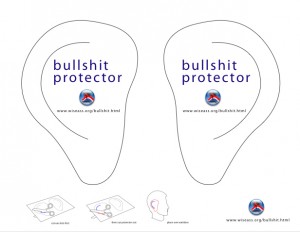 This curt announcement went out last Friday courtesy of the Texas Commission on Environmental Quality:
This curt announcement went out last Friday courtesy of the Texas Commission on Environmental Quality:
The Texas Commission on Environmental Quality (TCEQ) will host a public information meeting to provide information on the development of revisions to the SIP for the 2008 ozone National Ambient Air Quality Standard (NAAQS) in the 10-county Dallas-Fort Worth (DFW) nonattainment area. The meeting will take place on Thursday, September 5, 2013 at 10:00 a.m. at the North Central Texas Council of Governments (NCTCOG), Transportation Council Room, 616 Six Flags Drive, Arlington, Texas 76005. NCTCOG and United States Environmental Protection Agency (EPA) representatives will also provide updates on local and federal initiatives.
What this doesn't say is that the last local clean air plan drafted by Rick Perry's TCEQ failed miserably last summer when DFW actually ended up with worse air than when it had begun in 2010. The state can't even bring itself to admit that. It's never had a successful smog plan in DFW, but only Rick Perry's TCEQ plan actually made the air worse. Maybe that's why they're holding this "public information meeting" at a mid-morning time guaranteed to result in a low rate of participation by actual DFW citizens.
You'd also never guess from this release that DFW has a local advisory board for drafting its own clean air plans. The North Texas Clean Air Steering Committee was constituted specifically for the purposes of working with the state on such plans. It hasn't met in two years. Nor is it likely to meet anytime soon if Rick Perry's TCEQ has its way – the state considers it a nuisance to have to come up here and explain itself to local elected officials and environmentalists.
Did we say environmentalists? Since the 2006-2007 smog plan, citizen groups have held three seats on the Committee to balance out the three seats given the local Chambers of Commerce. Right now those seats are held by Downwiders at Risk, the Sierra Club/Public Citizen and the Environmental Defense Fund. The rest of the slots are filled by local city council members, Mayors, County Commissioners and County Judges.
Downwinder's own Jim Schermbeck is a member and has used the meetings of the Committee to cross-examine Rick Perry's TCEQ officials who otherwise receive a mostly unquestioning welcome everywhere else they go. Committee meetings are the one place that representatives fo citizens groups can ask questions like a legislator in an Austin hearing. And the TCEQ reallly doesn't like that. Especially when we've been right about so many things and the TCEQ so wrong.
It's also true that Rick Perry's TCEQ really doesn't even bother to start any kind of consultation or planning process in DFW until a year before the plan is due. Since a new plan to achieve the new ozons/smog standard of 75 parts per billion doesn't kick in until 2015, it's doubtful the Committee will be called to order before next Spring. That way the pollution control measures needed by any plan have no chance of passing a state legislature at the last moment in 2015, ensuing that no real changes take place and DFW remains smoggy.
Perhaps you think that's way too cynical a perspective. But that's exactly what happened this last cycle in 2010-2011. And it was actually worse, because the biggest part of that last plan was to sit back and watch as DFW residents bought new cars. No moving parts.
Meanwhile, can anyone name a current local elected official who's known for their advocacy of clean air? Dallas Mayor Laura Miller fought Perry's coal plants in 2006. in 2013, her successor, Dallas Mayor Mike Rawlings protects secret deals with gas drillers. Dr./Mayor Cluck in Arlington has voted in favor for dozens, if not hundreds, of gas wells near homes, parks, and day care centers even as he recites his familiar litany about running into childhood asthma victims in the hospital emergency room. Fort Worth? Bought and sold to Chesapeake. Dallas County? They're too busy indiscriminately dropping pesticides on us. Mayor Evans of Plano used to be a voice of reason in Collin County. Now you've got Judge Keith Self who never met an air polluter he didn't liked.
Some stalwarts like Parker County Judge Mark Riley and Tarrant County Judge Glenn Whitley still represent moderate Republican views, but many of their peers have been replaced by Tea Party members who think smog is as imaginary a problem as climate change. We're actually going backwards in our local political engagement of the issue.
If TCEQ is emasculating the local advisory group on clean air, it's certainly getting a valuable assist from a feckless DFW indigenous officialdom, who seemed to have all walked away as a group from clean air as a goal they were willing to strive to achieve.
So mark your calendars for another citizen-friendly TCEQ "public information meeting"….at 10 am on a Thursday morning, September 5th, in Arlginton at North Texas Council of Government headquarters, when most people will be working and unable to attend. For for the sensitive among you, we suggest also attending with some handy BS protectors for your ears so as not to irrevokably damage logic receptors in the brain.
EPA will Be Issuing Power Plant Permits in Texas Despite Greg Abbott’s Campaign for Governor
 There was never really any question, but just in case you were wondering, EPA will indeed be taking over the permitting of power plants in Texas based on new greenhouse gas emission rules.
There was never really any question, but just in case you were wondering, EPA will indeed be taking over the permitting of power plants in Texas based on new greenhouse gas emission rules.
The U.S. Court of Appeals slapped down Texas Attorney General Greg Abbott's recent challenge to the Environmental Protection Agency on Friday, one trying to keep the EPA from considering such emissions when they permit new facilities or approve large modifications on old ones.
New Studies Link Air Pollution to Cancer, Heart Failure and…Appendicitis?
 According to CBS News
According to CBS News
"A new study published July 10 in The Lancet showed that even breathing low levels of air pollution for a prolonged period of time could raise risk for the often-deadly lung disease. Another study released on the same date showed that short-term exposure to most major air pollutants could increase the risks of hospitalization and death from heart failure."
Lung cancer risks went up 18% with each increase of 5 migrograms of PM 2.5. Researchers noted that they did not find a level of pollution for where there was no risk, and the results indicated "the more the worse, the less the better" when it came to pollution.
"At this stage, we might have to add air pollution, even at current concentrations, to the list of causes of lung cancer and recognize that air pollution has large effects on public health," Takashi Yorifuji from the Okayama University Graduate School of Environmental and Life Science and Saori Kashima from Hiroshima University in Japan…."
A second study shows the risk of dying or going to the hospital because of heart failure increased by 3.52 percent for every 1 part per million increase of carbon monoxide levels; 2.36 percent for every increase of 10 parts per billion of sulfur dioxide; 1.7 percent for ever 10 parts per billion increase in nitrogen dioxide; and about 2 percent for every 10 micrograms per cubic meter increase of particulate matter. Surprisingly, increases in ozone were not linked to heart failure. Unsurprisingly, you're breahting in all of these kinds of air pollution if you live in DFW.
All of that is kind of old news – put stuff in air, see stuff harm your lungs and heart. But here's a new "adverse health effect" being linked to air pollution – appendicitis. While not as lethal as lung cancers and heart attacks, anyone who's had their appendix rupture can tell you it's not a pleasant experience.
And while ozone may not have been linked to heart problems in that previous study, the New York Times reports a Canadian one links it to a slight increase in your chances of having appendicitis.
High ozone levels were associated with an increased number of hospitalizations for appendicitis and were even more strongly associated with cases of burst appendix. For each 16 parts per billion increase in ozone concentration the scientists found an 11 to 22 percent increase in ruptured appendix cases. The study was published in Environmental Health Perspectives. The associations persisted after controlling for age, sex, season of the year and the presence of other air pollutants, like nitrogen dioxide and particulate matter. The reason for the association is unclear, but studies in mice have shown that air pollution can alter the animals’ abdominal bacteria.
Who knew?
